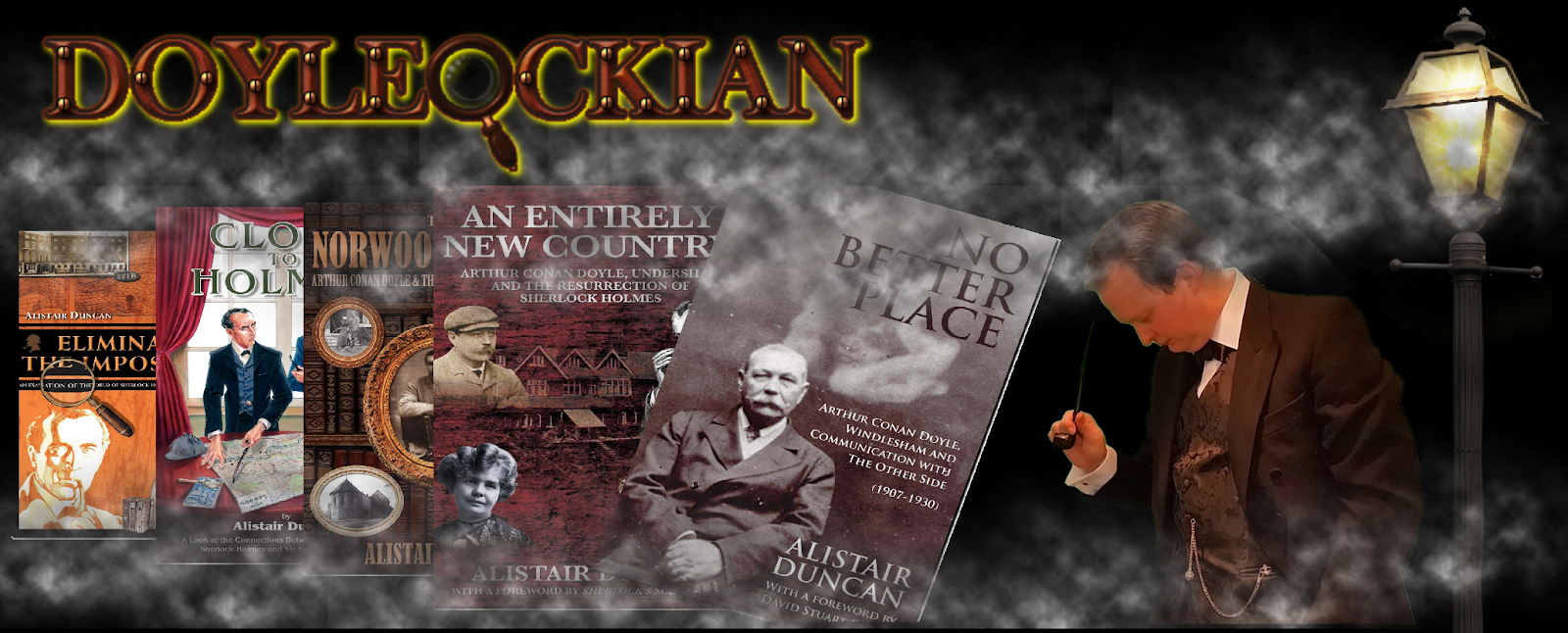Yawn. Conan Doyle and Plagiarism - again!
 Once again we have someone unearthing something amazing. Conan Doyle was a plagiarist. Zzzzzzzzzzzzzzzz.
Once again we have someone unearthing something amazing. Conan Doyle was a plagiarist. Zzzzzzzzzzzzzzzz.The long and short of it is that a man by the name of Hugh Lamb noticed, while researching a book, that there were similarities between a story called The Red Haired Pickpocket and Conan Doyle's Holmes story The Problem of Thor Bridge. His "stunning" find then found its way into the pages of The Times.
Now the pickpocket story - by Frank Froest (a former detective) and George Dilnot - did come out seven years before Conan Doyle's story but what of it? It doesn't follow that Conan Doyle indulged in a "direct lift" as a representative of publisher Harper Collins liked to put it.
 |
| Must try harder Mr Lamb |
This is by no means the only time that people have falsely accused Conan Doyle in this way. During the last 23 years of his life, as covered in my book No Better Place, Conan Doyle was accused of plagiarism twice. He was accused of stealing the plot of a story called The Splendid Angel written by one J.H. Symons for use in his Professor Challenger story The Land of Mist. He was also accused of lifting another of Symons' plots from a story called The End of the Marriage Vow for a short story called The Disintegration Machine. In both these cases the author Symons had nothing to do with the accusation. The charge came from third-parties who thought they'd uncovered a great injustice (see the pattern?).
Conan Doyle sued the publisher and printer of the article and demonstrated that both his stories were with his literary agent before Symons' stories emerged. The allegations were withdrawn.
Returning to Thor Bridge; while we're throwing accusations around let's have a go at Margery Allingham who employed a similar plot in her Albert Campion story Police at the Funeral. Why was she not sued by the Conan Doyle Estate or the estates of Froest and Dilnot?
Again - because all parties knew there was no theft.
Bottom line - poor journalism and a rather transparent attempt at stirring up publicity for a book at the same time as smearing a man no longer around to defend himself.

 Written by Alistair Duncan
Written by Alistair Duncan Buy my books
Buy my books 

A letter to The Times would see to be in order.
ReplyDeleteMattias has taken it up with Harper Collins UK directly.
DeleteThis does keep coming up. Letter to the editor, Alistair? Also might be a good article for IHOSE. Why not pitch it to them?
ReplyDeleteIt's a post from the past. I'm putting it up for interest. It's not current. :-)
Delete